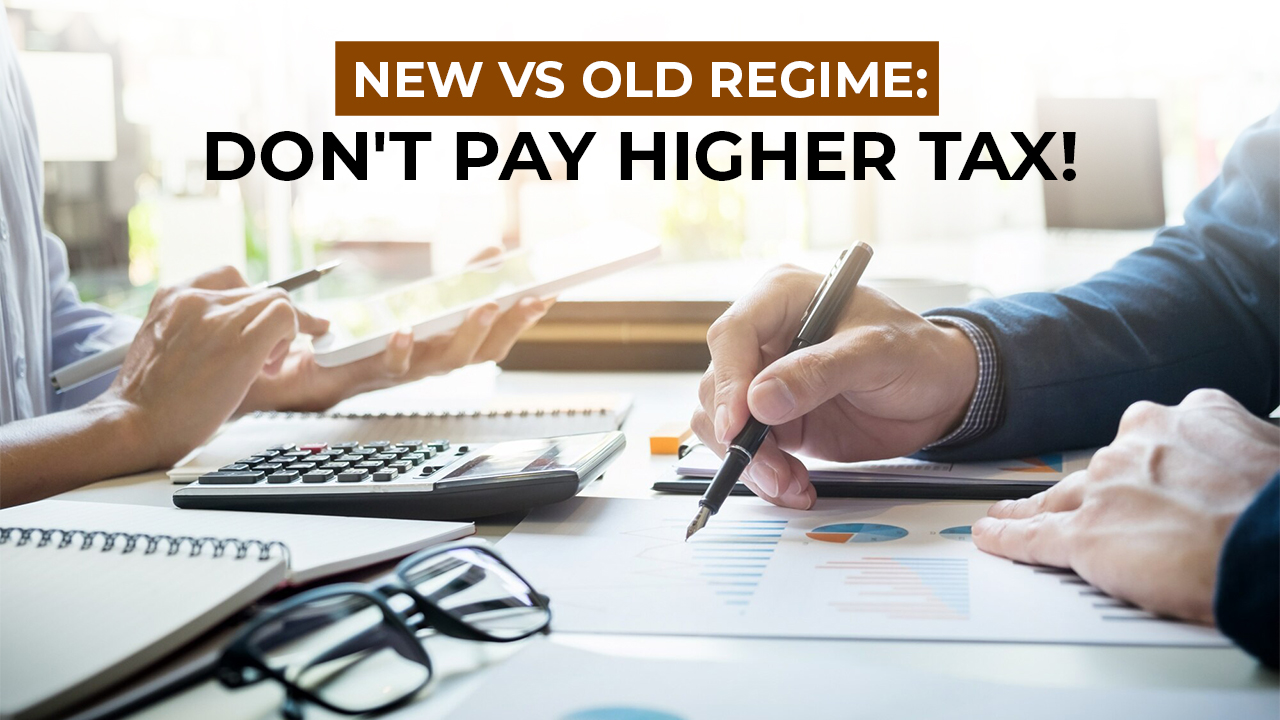TDS on salary: Don’t pay higher tax! How to choose between new and old income tax regime | Business

[ad_1]
April is important for salaried individuals in terms of tax planning for the fiscal year 2024-25.They must inform their employers in April whether they choose the old or new tax regime for FY 2024-25. This choice determines the amount of tax deducted from their salary income throughout the year.
Choosing between New and Old Income Tax Regime
According to the law, the new tax regime is automatically applied if a salaried employee doesn’t inform their employer of their preferred tax regime. Taxes will be deducted based on the income tax slabs of the new regime.
If a salaried employee doesn’t choose the tax regime that minimises their tax at the beginning of the financial year, they might face higher tax deductions from their salary. This reduces their take-home pay, and they’ll need to wait until the next financial year to claim any excess tax paid as a refund for FY 2024-25.
The Central Board of Direct Taxes (CBDT) issued a circular in April 2023 outlining the procedure for employers to deduct TDS from salary. However, according to an ET report, the circular does not address whether individuals can switch between the new and old tax regimes for TDS purposes during the financial year.
Typically, most companies do not permit such switches once chosen at the beginning of the year. However, individuals retain the flexibility to choose any tax regime when filing their Income Tax Return (ITR), regardless of the regime chosen for TDS on salary. One needs to keep in mind though that the option to switch at the time of ITR filing is only available if you submit the return within the due date.
Also Read | New Vs Old Tax Regime: How income of even Rs 10 lakh can be tax-free under old tax regime
Income Tax Rules 2024-25
When selecting an income tax regime, it’s important for salaried individuals to be aware of the current income tax rules. Understanding these rules allows them to weigh the advantages and disadvantages of both tax regimes before making a decision.
If a salaried individual chooses the new income tax regime for the financial year 2024-25, they won’t be eligible for most tax exemptions and deductions available in the old tax regime. The main features of the new tax regime include:
a) A basic exemption limit of Rs 3 lakh, applicable regardless of the individual’s age.
b) A standard deduction of Rs 50,000 from salary income.
c) Zero tax payable if the net taxable income in the financial year does not exceed Rs 7 lakh.
d) Employer’s contribution to Tier-I NPS account is eligible for a tax break under Section 80CCD (2).
Income tax slabs under new tax regime
| Income range (In Rs) | Income tax rate (%) |
| 0-3,00,000 | 0 |
| 3,00,001-6,00,000 | 5 |
| 6,00,001-9,00,000 | 10 |
| 9,00,001-12,00,000 | 15 |
| 12,00,001-15,00,000 | 20 |
| 15,00,001 and above | 30 |
However, if a salaried individual chooses the old income tax regime for 2024-25, they can avail numerous tax exemptions and deductions. Under the old tax regime:
a) The basic exemption limit varies based on the individual’s age: Rs 2.5 lakh for those below 60 years, Rs 3 lakh for those between 60 to 79 years, and Rs 5 lakh for those aged 80 years or above.
b) Various common deductions are available, such as Section 80C deduction of up to Rs 1.5 lakh, a standard deduction of Rs 50,000 from salary income, Section 80D deduction on health insurance premiums paid, and tax exemption on house rent allowance (HRA), among others, provided the conditions for these tax breaks are met.
c) Employer’s contribution to Tier-I NPS account qualifies for a tax break under Section 80CCD (2). Additionally, individuals can claim an additional tax break of Rs 50,000 for NPS investment under Section 80CCD (1B).
d) Zero tax is payable if the net taxable income in the financial year does not exceed Rs 5 lakh.
Income tax slabs under old tax regime
| Income range (In Rs) | Income tax rate (%) |
| 0-2,50,000 | 0 |
| 2,50,001-5,00,000 | 5 |
| 5,00,001-10,00,000 | 20 |
| 10,00,001 and above | 30 |
The above income tax slabs are applicable for individuals below 60 years of age.
It’s important to note that both the old and new income tax regimes incur a cess of 4% on the income tax payable. Additionally, a surcharge is applicable on the tax payable for taxable income exceeding Rs 50 lakh under both regimes.
New vs old tax regime for TDS on salary
When deciding between the old and new income tax regimes for informing the employer about TDS on salary, salaried individuals should begin by estimating their taxable income for 2024-25. Then, they need to calculate their tax liability under both regimes, considering applicable deductions and exemptions. By comparing the tax liabilities under each regime, individuals can choose the option with the lower tax payable.
If you expect receiving a salary increment in 2024-25, remember to consider this when estimating your taxable income.
Also Read | Income Tax Rules FY 2024-25: New vs old tax regime – 6 rules salaried individuals should know
Here are some examples illustrating how choosing the wrong tax regime can result in higher taxes deducted from your salary income:
Suppose an individual is eligible for the following deductions:
a) Standard deduction of Rs 50,000 under both tax regimes.
b) Section 80C deduction of Rs 1.5 lakh in the old tax regime.
c) Section 80CCD (1B) deduction of Rs 50,000 in the old tax regime for NPS contributions. Under the old tax regime, a salaried individual can claim a total deduction of Rs 2.5 lakh.
Under the new tax regime, a salaried individual can only claim a total deduction of Rs 50,000.
| Gross Total Income (without reducing Standard Deduction u/s 16(ia)) |
Total Deduction under Old Tax Regime | Total Taxable Income under Old Tax Regime | Total Tax Liability under Old Tax Regime | Total Deduction under New Tax Regime | Total Taxable Income under New Tax Regime | Total Tax Liability under New Tax Regime |
| 9,00,000 | (2,50,000) | 6,50,000 | 44,200 | (50,000) | 8,50,000 | 41,600 |
| 10,00,000 | (2,50,000) | 7,50,000 | 65,000 | (50,000) | 9,50,000 | 54,600 |
| 12,00,000 | (2,50,000) | 9,50,000 | 1,06,600 | (50,000) | 11,50,000 | 85,800 |
| 15,00,000 | (2,50,000) | 12,50,000 | 1,95,000 | (50,000) | 14,50,000 | 1,45,600 |
Source: RSM India as quoted by ET
While the table indicates that tax liability is higher in the old tax regime across all income levels, it’s essential to consider additional deductions such as HRA tax exemption and Section 80D deduction. These may result in a lower tax liability under the old tax regime compared to the new one. Therefore, it’s crucial for individuals to compare their estimated tax liabilities under both income tax regimes before selecting the one for TDS on salary.
Additionally, it’s important to remember that salaried individuals may receive capital gains from asset sales or dividends from equity shares and mutual funds during the financial year. Since these incomes cannot be accurately estimated beforehand, it’s advisable to compare the tax liability under both tax regimes based on the actual taxable income when filing the income tax return for FY 2024-25. Based on the actual tax liability, individuals should choose the favourable tax regime and file the ITR accordingly.
#TDS #salary #Dont #pay #higher #tax #choose #income #tax #regime #Business






